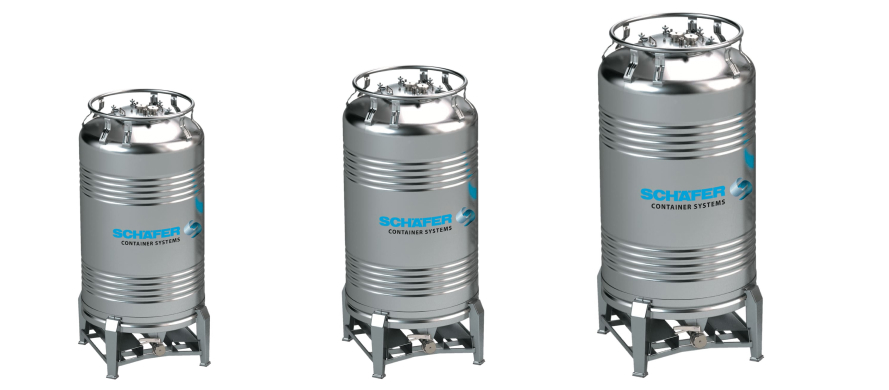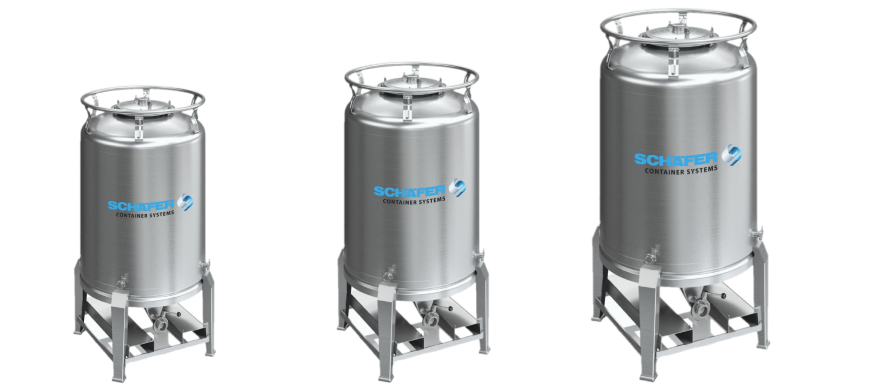Why You Should Use Stainless Steel Tanks for Wine Aging
Posted by Ron on 29th Sep 2023
Aging wine in a stainless steel tank is a reliable and efficient aging method that preserves the wine's freshness, allows for precise temperature control, and offers versatility in winemaking.
In this article, we explore the nuances of using stainless steel tanks for wine aging and what makes them a popular choice in the wine industry.
The Impact of Aging on Wine Flavor
What does aging do to wine? Aging wine can significantly impact its flavor profile, and the choice of aging vessel, such as stainless steel or barrels, can contribute to distinct nuances. The main thing one should remember here is that there’s no such thing as one better than the other.
Each method brings its own unique characteristics to the wine, allowing for a diverse range of flavor profiles and aging potential. Plus, a lot depends on the winemaker's desired style and the grape variety.
With this in mind, let’s compare wine aged in stainless steel tanks with wine aged in barrels and answer the question, “What do stainless steel tanks for wine do?”.
| Criteria | Stainless steel tanks | Oak barrels |
| Type of wine | White wines and some lighter-bodied red wines | Red wines |
| Influence of oxygen | Minimized, resulting in a crisper and more vibrant flavor profile | Slow introduction of oxygen, which can soften the wine's tannins and enhance its complexity |
| Taste/flavor | Fruit-forward characteristics are enhanced, with notes of citrus, green apple, and tropical fruits | Secondary flavors are more developed: vanilla, caramel, spice, and toasted oak, along with a rounder mouthfeel |
The Advantages of Stainless Steel Wine Tanks
To get the best from the stainless steel tanks for wine, you should be aware of their strengths and weaknesses compared to the traditional wine aging methods. Here are some of the biggest advantages of stainless steel tanks.
- Preservation of freshness
Stainless steel tanks provide an airtight environment, minimizing oxygen exposure during aging. This helps preserve the wine's freshness, vibrant fruit flavors, and natural acidity.
- Neutral influence
Unlike oak barrels, stainless steel tanks do not impart any flavors or aromas to the wine. This neutrality allows the true expression of the grape varietal and the winemaker's intended style to shine through.
- Easy maintenance and sanitation
Stainless steel tanks are easy to clean and maintain. The smooth interior surfaces and rounded corners minimize the risk of bacterial growth and make cleaning more efficient.
- Cost-effectiveness
Stainless steel tanks are generally more cost-effective compared to oak barrels. They have a longer lifespan and require less maintenance and upkeep. Spare fitting valves are always available online, as well as other wine keg parts.
- Versatility
The neutral environment of stainless steel allows winemakers to experiment with different techniques and fermentation processes, offering flexibility in winemaking practices.
Choosing the Best Wine Stainless Steel Tanks
When selecting stainless steel tanks for wine, there are several key factors to consider, some of which can greatly influence the quality and characteristics of the wine.
- Size and capacity
Consider the capacity needed to accommodate the wine without excessive headspace, which can lead to oxidation.
- Temperature control
Ensure the tanks have proper insulation and cooling/heating capabilities.
- Sanitation and cleanliness
Look for tanks with smooth interior surfaces, rounded corners, and removable fittings to ensure thorough cleaning and prevent bacterial growth.
- Durability and longevity
Consider the quality and thickness of the stainless steel used in the tank construction. Higher-grade stainless steel with thicker walls provides better durability and longevity, ensuring the tank's integrity over time.
- Cost and budget
Evaluate the cost of stainless steel tanks and compare it to your budget. Consider the long-term benefits and potential return on investment when selecting the appropriate tank.
By considering these factors, you can find the best wine stainless steel tanks that suit your specific wine-making needs and contribute to the desired flavor profile and quality of the aged wine.


Variable Volume Wine Tanks for Precision Aging
A variable-volume wine tank is a tank that’s capable of changing its volume or capacity to match the amount of wine inside it. It can expand or contract to fit the exact quantity of wine you want to store.
Variable-volume wine tanks provide winemakers with the flexibility, control, and cost-efficiency required to produce high-quality wines across different batch sizes.
Optimal Wine Aging in Stainless Steel Tanks
Here is a short step-by-step guide on how to age wine in stainless steel tanks.
- Ensure that the wine has completed fermentation before transferring it to the stainless steel tank
- Clean and sanitize the tank (proper cleaning and preparation of the tanks is hugely important)
- Transfer the wine
- Seal the tank to limit oxygen exposure
- Set the desired temperature based on the wine's aging requirements
- Regularly monitor the wine aging process and adjust to ensure optimal aging conditions
- Taste and evaluate
- Prepare for bottling
- Bottle the wine from the wine kegs
If you’re looking where to buy kegs, be sure to check the Beverage Craft selection first.

